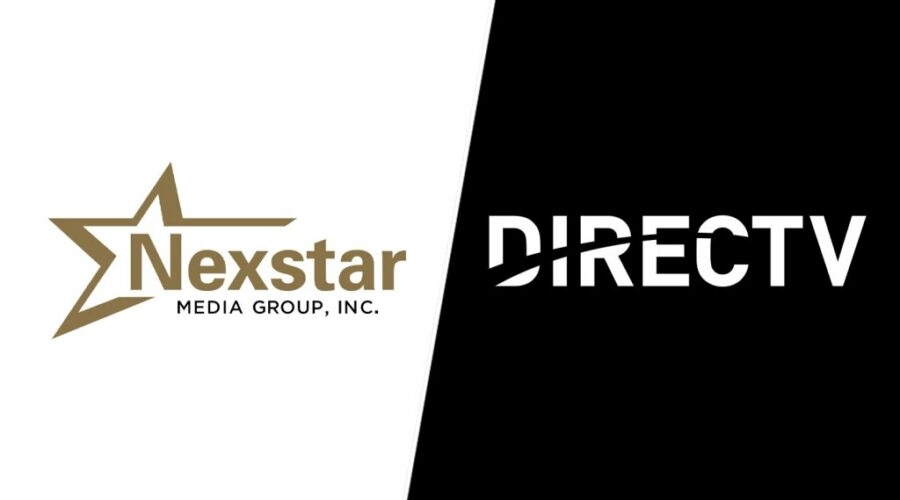DirecTV And Nexstar Dig In For Long-Haul Carriage Dispute During Lull In Summer Programming
A Fourth of July miracle appears extremely unlikely for the millions of DirecTV customers who lost access Sunday to programming from Nexstar-owned local stations or cable network NewsNation.
Instead, a protracted distribution battle is apt to play out during a summer programming lull and a time of great uncertainty for TV stakeholders given the WGA strike and another potential walkout by SAG-AFTRA.
About 159 ABC, CBS, Fox, NBC and CW affiliates went dark Sunday evening due to a carriage dispute between Nexstar, the largest local station owner in the U.S., and DirecTV, the country’s third-largest pay-TV provider. Top markets like LA, Chicago, Philadelphia, San Francisco and Denver are part of the tangle, including marquee stations like KTLA and WGN. The exact number of DirecTV subscribers affected is, like the entire impasse, a matter of dispute. Nexstar says it is more than 10 million of DirecTV’s base of almost 13 million. DirecTV says the number is significantly lower.
Related Story
Nexstar Media Group Stations Go Dark On DirecTV As Carriage Dispute Begins
Sources familiar with the state of discussions between the parties indicate that there hasn’t been much in the way of positive momentum. Given that the sports calendar and broadcast primetime slate, apart from Major League Baseball, the Women’s World Cup and a smattering of reality shows, are at low tide ahead of the arrival of NFL and college football and the start of the traditional fall season, the stand-off is expected to last for a while. Without must-see content spurring customers to demand a solution, the parties can let the pot continue to boil. Another factor is the two-month-old WGA strike, which has already constricted the flow of programming and could completely strangle it if SAG-AFTRA members decide to walk out this month.
Nexstar maintains that its contract with DirecTV, spanning its main satellite service, internet bundle DirecTV Now and U-verse cable systems, has effectively become obsolete. The distributor, Nexstar argues, can keep increasing prices for customers while continuing to pay rates for programming that were negotiated several years ago. In a statement, Nexstar said it had negotiated “tirelessly and in good faith” since last May and also offered DirecTV a chance to extend the current contract as far out as October 31, but the operator “rejected” the offer.
Rob Thun, chief content officer of DirecTV, countered in a statement that Nexstar has “a long track record of forcing programming outages in an effort to unnecessarily raise prices.” (Nexstar counters that DirecTV has had 159 networks go dark on its systems since 2019.) Thun nevertheless vowed that his company would “continue to work with Nexstar to reach an agreement.”
As they look to achieve a cease-fire on one front, however, the companies are at war on another one. In a lawsuit and FCC complaint, DirecTV has objected to Nexstar’s deployment of so-called “sidecar” deals, which the distributor says amount to efforts to artificially increase its scale and circumvent federal ownership limits. Nexstar says the “shared service” deals with subsidiaries Mission Broadcasting (whose portfolio includes New York’s WPIX) and White Knight are “in full compliance” with FCC rules, adding that the company “looks forward to prevailing in court.”
While carriage battles have been commonplace for decades, even during the ascendance of the pay-TV bundle, they have taken on a more existential valence during the current era of decline. Veteran analyst Craig Moffett of MoffettNathanson, in a blistering report in May, wrote that cord-cutting has “accelerated to new all-time worst levels,” with several million homes leaving the bundle each year. It has reached the point, Moffett noted, where there are fewer U.S. households with a subscription to linear pay-TV than those without one. He called the trend “irreversible,” declaring that the media industry and Wall Street are “watching the sun beginning to set.”
DirecTV, which was spun off from AT&T into an entity 30%-owned by private equity firm TPG, has lost about 15% of its total subscriber base in just the past three years, according to data from Leichtman Research Group, dipping to 12.75 million in the first quarter.
In a shrinking pay-TV world, the fights over terms have gone to some new extremes. Dish Network opted to walk away from regional sports networks, HBO and other networks years ago, and smaller but still consequential player Fubo TV did likewise with the WarnerMedia networks now run by Warner Bros. Discovery. The roster of networks sustained on the top platforms is becoming a swiss-cheese shadow of the prior state of reliably uniform carriage.
The decline in overall subscribers makes the terms for individual carriage deals all the more crucial. Just as ad rates have managed to keep climbing in some parts of the broadcast and cable TV schedule despite a secular ratings slide, programmers are expecting to keep pushing through rate increases. Nexstar last fall took a 75% stake in the CW, in part to add to its distribution heft as it seeks greater scale as a means of securing higher fees.
At a Wall Street conference earlier this year, Nexstar President Tom Carter acknowledged the company’s balance sheet bore a few blemishes in the fourth quarter of 2022 from costly skirmishes with operators. But he said the company nonetheless remains bullish about the long-term outlook for distribution revenue, which ticked up 4% last year to almost $2.6 billion.
“We are projecting subscriber attrition,” he acknowledged. “But make no mistake about it — we do not see a cliff. We’re not at a precipice here, or at a point in time where we’re at an inflection point.”
Must Read Stories
Midsummer Box Office Hitting $1.88 Billion, Down 2% From Last Year
‘Dial Of Destiny’ Posts Blasé $60M Opening: How That Happened
Daniel Kaluuya-Led ‘Barney’ Pic To Be Adult-Focused, “A24-Type” Effort, Says Exec
SAG-AFTRA & AMPTP Extend Contract To July 12 As Negotiations Continue
Read More About:
Source: Read Full Article





